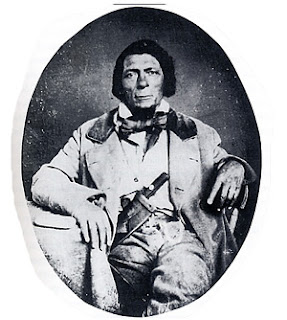Miriam
Amanda "Ma" Ferguson
served as first lady of Texas during her husband's term in office,
then ran for Governor in 1924 and became the second
woman governor in the U.S.
As Women's History Month comes to a close I thought we'd take a look at the life of the second female governor to serve the United States: Miriam Amanda Ferguson, Governor of Texas, who was voted into office 15 days after the first female Governor of Wyoming, Nellie Tayloe Ross.
Miriam
Amanda Ferguson was born and raised in Texas and although she attended Baylor
College, she devoted her young adult life to caring for her husband and two
daughters. She served as the first lady of Texas during her husband’s term in
office, but when he failed to get his name on the ballot in 1924, “Ma” Ferguson
decided it was time to go to work as a politician.
Ferguson's
Childhood
Miriam
Amanda Ferguson was born on June 13, 1875 in Bell County, Texas to Joseph L and
Eliza (Garrison) Wallace. She attended Salado College with her future husband,
though he was eventually expelled for disobedience and wandered about the
country before returning to Bell County. Miriam, however, continued her education
at Salado then attended Baylor Female College in Belton, Texas. Ferguson and
her husband, James Edward Ferguson, were married on December 31, 1899. They
soon had two daughters and Ferguson devoted herself to caring for her young
family.
The home of James and Miriam Amanda Ferguson.
James
Ferguson Runs for Office
When
Ferguson’s husband, James Edward Ferguson, returned to Bell County, he studied
law and was admitted to the bar in 1897. He was also employed in real estate,
insurance, banking, and dabbled in local politics. Prohibition was a hot political
topic at that time, particularly in the 1914 campaign for governor of Texas.
The prohibitionists supported Thomas H. Ball. The anti-prohibitionists
attempted an elimination convention, but Ferguson, on record as an
anti-prohibitionist, refused to submit his name and the conventioneers were
unable to eliminate him. This put the party in a difficult position as they
obviously could not name a rival candidate for the position. They did not
endorse Ferguson, but all other anti-prohibition candidates withdrew and
Ferguson won the nomination for Governor.
James
Ferguson's Politics
During
his first term in office, he was responsible for enacting state aid to schools
and prison landholdings were increased so that state prisons actually showed a
profit. Ferguson was re-elected. However, he soon became involved in a quarrel
with the University of Texas when he vetoed all funding because they would not
dismiss administrators that he personally found objectionable. In 1917,
Ferguson was indicted on eleven charges, including misapplication of public
funds. He made bond and announced his candidacy for a third term as governor,
but failed to be placed on the ballot.
Miriam
Amanda Ferguson Runs for Governor
Miriam
Amanda Ferguson was a wise and resourceful woman. When her husband failed to
place on the ballot, she immediately announced she would run for governor,
promising voters that they would gain “two governors for the price of one.” She
bravely condemned the Ku Klux Klan, opposed new liquor legislation in spite of the
fact that she was a “teetotaler,” and was elected the Democratic gubernatorial
candidate. Her Republican opponent was George C. Butte, former Dean of the
University of Texas Law School, but she easily defeated him in November of 1924
and was inaugurated only fifteen days after Nellie Ross became Governor of
Wyoming and the first woman governor of the United States.
Miriam
Ferguson in Office
As
Governor of Texas, Ferguson was considered a fiscal conservative. She continued
to attack the Klan and to fight against prohibition. However, like her husband,
her term in office was steeped in controversy. She averaged 100 prison pardons
a month and was accused of taking bribes and receiving kickbacks. There was an
unsuccessful attempt to impeach her, and she was ultimately defeated in both
the 1926 and 1930 primaries, but she ran again in 1932 and won a second term as
Governor of Texas.
Death
and Legacy of Miriam Amanda Ferguson
After
her second term in office, Ferguson and her husband both retired from politics.
Miriam Amanda Ferguson died of heart failure on June 25, 1961. She was
eighty-six years old. During her time in office she was responsible for
signing into action Texas House Bill 194 in October of 1933, which established
the University of Houston as a four year institution. It was never proven that
her extensive record of pardons was the result of bribes and some claimed it
was her way of alleviating the heavily burdened prisons in Texas. Nevertheless,
her actions in this area also led the Texas Legislature to amend Texas law so
governors can no longer unilaterally issue pardons. Pardons must be recommended
by the Texas Board of Pardon and Parole.
Sources:
- Huddleston, John D. “Miriam Amanda Ferguson.” The Handbook of Texas Online. Texas State Historical Association. Retrieved December 30, 2009.
- Steen, Ralph W. “James Edward Ferguson.” The Handbook of Texas Online. Texas State Historical Association. Retrieved December 30, 2009.













